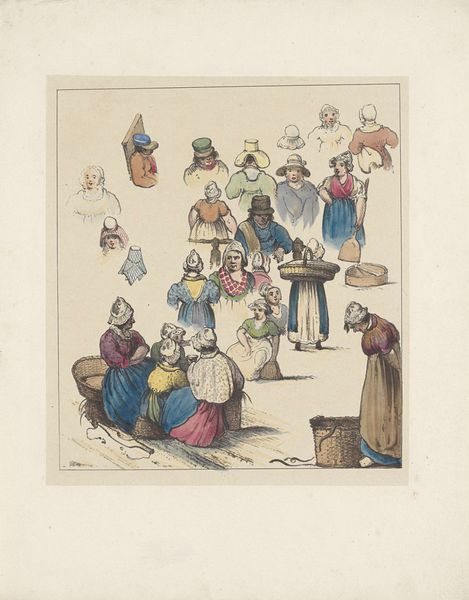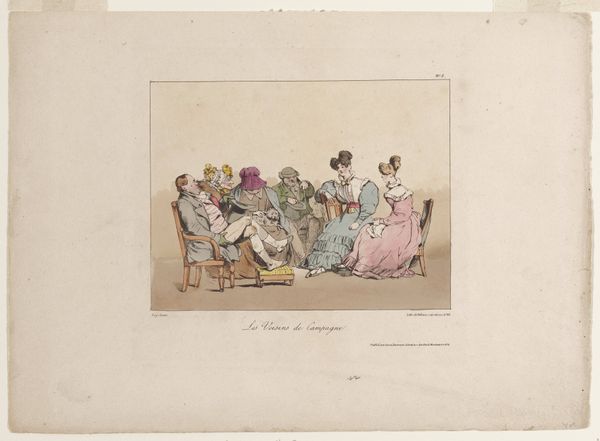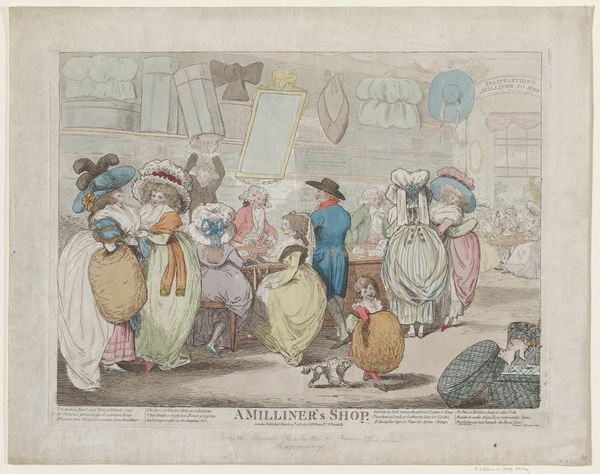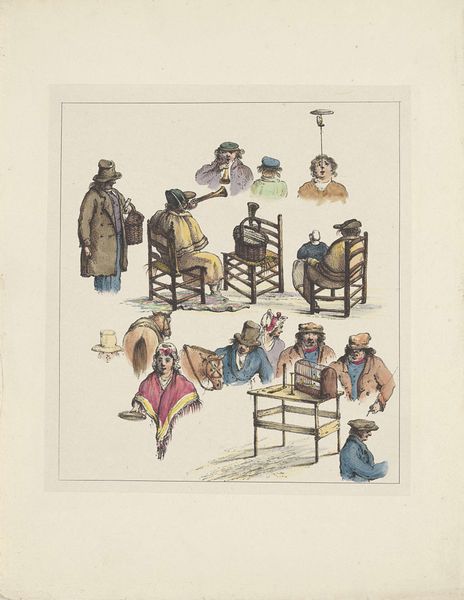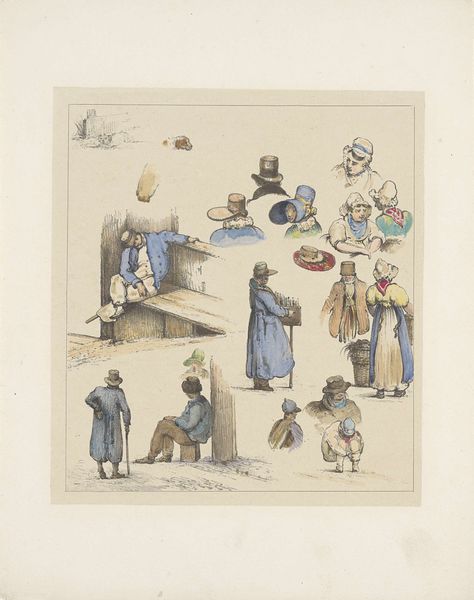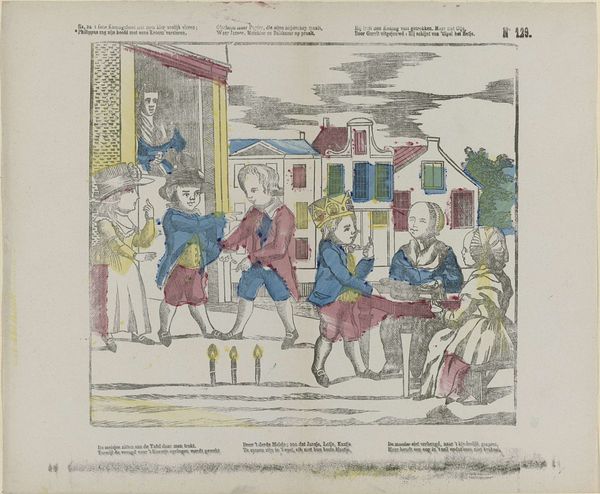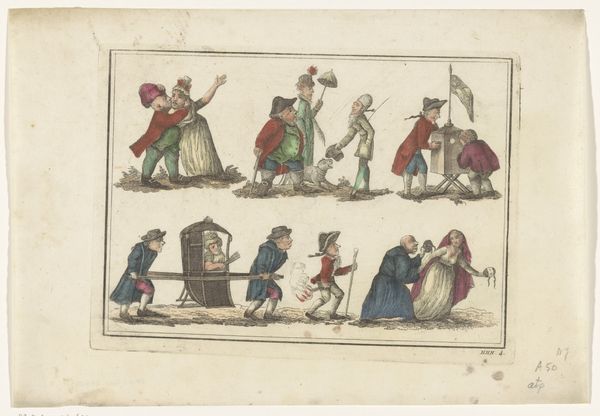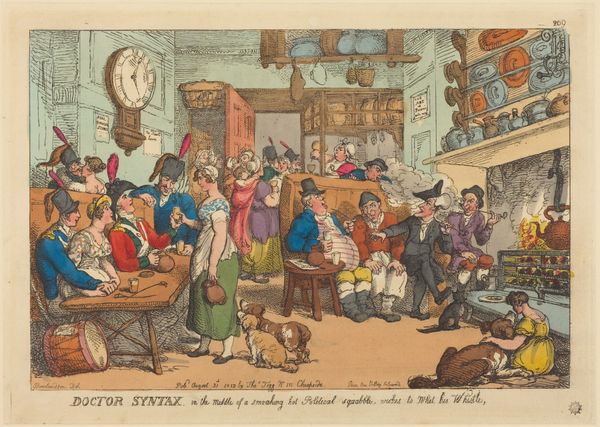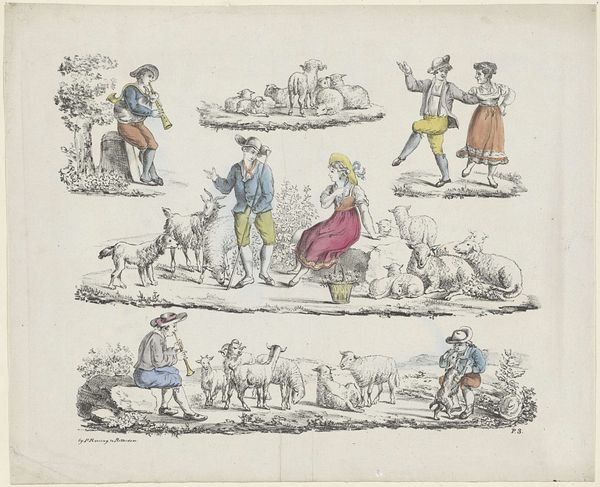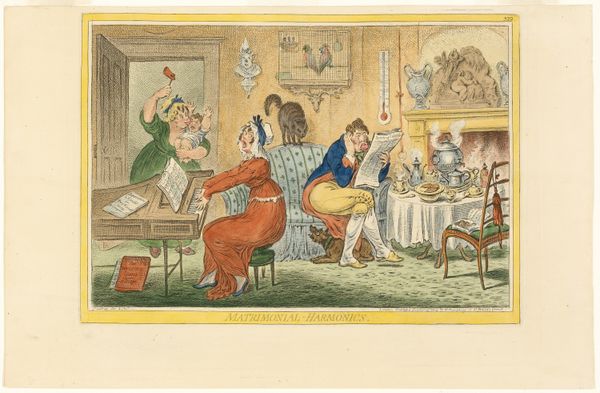
drawing, watercolor, pencil
#
drawing
#
caricature
#
figuration
#
watercolor
#
romanticism
#
pencil
#
watercolour illustration
#
genre-painting
Dimensions: height 230 mm, width 203 mm
Copyright: Rijks Museum: Open Domain
Curator: Let's examine "Figuurstudies (vijfde blad)" from 1833, by Christiaan Andriessen. It’s a drawing using pencil and watercolor. The sheet is teeming with figures, almost a catalog of characters rendered in this wonderfully loose, romantic style. What catches your eye? Editor: The variety of people! It’s almost like a snapshot of daily life, but fractured, disconnected. Is it just me, or are some of the figures drawn with a satirical edge? How would you interpret Andriessen's choices here? Curator: Absolutely! I see this work as documenting labor and class through a romantic lens. Consider the materials. Pencil and watercolor – relatively inexpensive and accessible. Andriessen isn't using oil paints to depict noble subjects. He’s using humble means to capture everyday people. Look at the depiction of labor—spinning yarn or playing music. These are specific skills and modes of production represented, aren't they? Do you notice how that emphasis shifts away from simply portraying pretty pictures, and towards something about social dynamics? Editor: I do, especially knowing that it was made in 1833, it makes you think of who is working, who has access to music. The clothes of the dancing figures... how would clothing construction factor into this material reading? Curator: Precisely. Clothing as a material signifies class. Mass production was taking off at the time; were these clothes factory-made or handmade? What can their fabrics tell us about the people depicted and their socio-economic status? And by making this a drawing instead of a painting, what does this choice reflect on accessibility? Editor: That makes so much sense. So the medium itself and the subjects aren't separate but intrinsically linked to their historical context and accessibility? Curator: Exactly! By looking at the "stuff" of this image, the materials, the techniques, even the implied labor behind depicted scenes, we can move past aesthetic appreciation and get to the nitty-gritty of what art says about how society is organized. Editor: Thank you for making that visible! It's changed how I will look at drawings. Curator: And it also makes me think that approaching this method towards other materials can broaden my analysis on social impact as well.
Comments
No comments
Be the first to comment and join the conversation on the ultimate creative platform.

